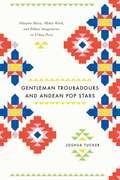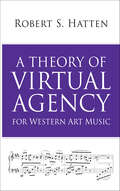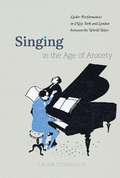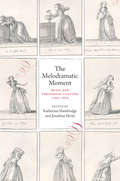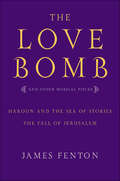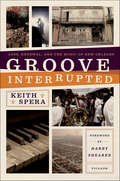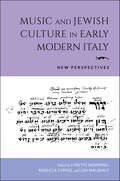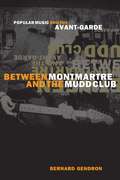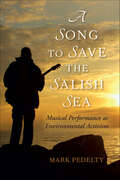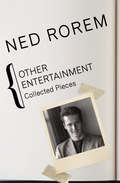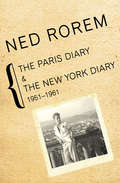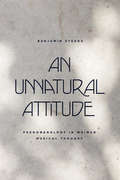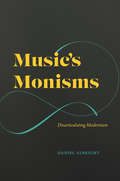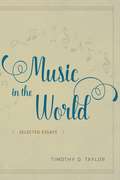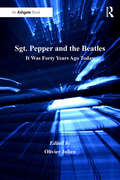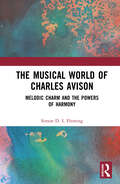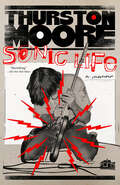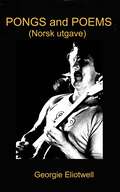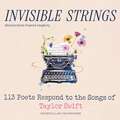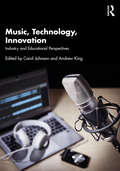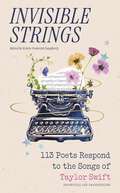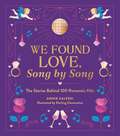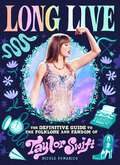- Table View
- List View
Gentleman Troubadours and Andean Pop Stars: Huayno Music, Media Work, and Ethnic Imaginaries in Urban Peru (Chicago Studies In Ethnomusicology Ser.)
by Joshua TuckerExploring Peru’s lively music industry and the studio producers, radio DJs, and program directors that drive it, Gentleman Troubadours and Andean Pop Stars is a fascinating account of the deliberate development of artistic taste. Focusing on popular huayno music and the ways it has been promoted to Peru’s emerging middle class, Joshua Tucker tells a complex story of identity making and the marketing forces entangled with it, providing crucial insights into the dynamics among art, class, and ethnicity that reach far beyond the Andes. Tucker focuses on the music of Ayacucho, Peru, examining how media workers and intellectuals there transformed the city’s huayno music into the country’s most popular style. By marketing contemporary huayno against its traditional counterpart, these agents, Tucker argues, have paradoxically reinforced ethnic hierarchies at the same time that they have challenged them. Navigating between a burgeoning Andean bourgeoisie and a music industry eager to sell them symbols of newfound sophistication, Gentleman Troubadours and Andean Pop Stars is a deep account of the real people behind cultural change.
A Theory of Virtual Agency for Western Art Music (Musical Meaning and Interpretation)
by Robert S. HattenIn his third volume on musical expressive meaning, Robert S. Hatten examines virtual agency in music from the perspectives of movement, gesture, embodiment, topics, tropes, emotion, narrativity, and performance. Distinguished from the actual agency of composers and performers, whose intentional actions either create music as notated or manifest music as significant sound, virtual agency is inferred from the implied actions of those sounds, as they move and reveal tendencies within music-stylistic contexts. From our most basic attributions of sources for perceived energies in music, to the highest realm of our engagement with musical subjectivity, Hatten explains how virtual agents arose as distinct from actual ones, how unspecified actants can take on characteristics of (virtual) human agents, and how virtual agents assume various actorial roles. Along the way, Hatten demonstrates some of the musical means by which composers and performers from different historical eras have staged and projected various levels of virtual agency, engaging listeners imaginatively and interactively within the expressive realms of their virtual and fictional musical worlds.
Singing in the Age of Anxiety: Lieder Performances in New York and London between the World Wars
by Laura TunbridgeIn New York and London during World War I, the performance of lieder—German art songs—was roundly prohibited, representing as they did the music and language of the enemy. But as German musicians returned to the transatlantic circuit in the 1920s, so too did the songs of Franz Schubert, Hugo Wolf, and Richard Strauss. Lieder were encountered in a variety of venues and media—at luxury hotels and on ocean liners, in vaudeville productions and at Carnegie Hall, and on gramophone recordings, radio broadcasts, and films. Laura Tunbridge explores the renewed vitality of this refugee musical form between the world wars, offering a fresh perspective on a period that was pervaded by anxieties of displacement. Through richly varied case studies, Singing in the Age of Anxiety traces how lieder were circulated, presented, and consumed in metropolitan contexts, shedding new light on how music facilitated unlikely crossings of nationalist and internationalist ideologies during the interwar period.
The Melodramatic Moment: Music and Theatrical Culture, 1790–1820
by Jonathan Hicks Katherine HambridgeWe seem to see melodrama everywhere we look—from the soliloquies of devastation in a Dickens novel to the abject monstrosity of Frankenstein’s creation, and from Louise Brooks’s exaggerated acting in Pandora’s Box to the vicissitudes endlessly reshaping the life of a brooding Don Draper. This anthology proposes to address the sometimes bewilderingly broad understandings of melodrama by insisting on the historical specificity of its genesis on the stage in late-eighteenth-century Europe. Melodrama emerged during this time in the metropolitan centers of London, Paris, Vienna, and Berlin through stage adaptations of classical subjects and gothic novels, and they became famous for their use of passionate expression and spectacular scenery. Yet, as contributors to this volume emphasize, early melodramas also placed sound at center stage, through their distinctive—and often disconcerting—alternations between speech and music. This book draws out the melo of melodrama, showing the crucial dimensions of sound and music for a genre that permeates our dramatic, literary, and cinematic sensibilities today. A richly interdisciplinary anthology, The Melodramatic Moment will open up new dialogues between musicology and literary and theater studies.
The Love Bomb: And Other Musical Pieces
by James FentonThree Libretti—Ranging In Setting From Ancient Jerusalem To Pre-Apocalyptic London—From An Acclaimed PoetThis volume of libretti marks new work—and new terrain—for James Fenton. Commissioned by companies in New York and England, these musical pieces make the most of the poet's poignant, witty, and characteristically lyrical verse. Whether evoking modern-day London on the edge of apocalypse in The Love Bomb, a timeless land beyond the moon in this version of Salman Rushdie's children's novel Haroun and the Sea of Stories, or ancient Jerusalem in his stirring oratorio The Fall of Jerusalem, which was composed to mark the millennium, Fenton's lucid storytelling and stylish wordplay bring these pieces vividly to life—with equal power in performance or on the page.Haroun and the Sea of Stories was commissioned by the New York City Opera and had its premiere at Lincoln Center in September 2003."[James Fenton] writes as no one else dares to--with clarity, wit, and the simplest of rhymes."--Voice Literary Supplement
Groove Interrupted: Loss, Renewal, and the Music of New Orleans
by Keith SperaThe recent history of New Orleans is fraught with tragedy and triumph. Both are reflected in the city's vibrant, idiosyncratic music community. In Keith Spera's intimately reported Groove Interrupted, Aaron Neville returns to New Orleans for the first time after Hurricane Katrina to bury his wife. Fats Domino improbably rambles around Manhattan to promote a post-Katrina tribute CD. Alex Chilton lives anonymously in a battered cottage in the Treme neighborhood. Platinum-selling rapper Mystikal rekindles his career after six years in prison. Jazz trumpeter Terence Blanchard struggles to translate Katrina into music. The spotlight also shines on Allen Toussaint, Pete Fountain, Gatemouth Brown, the Rebirth Brass Band, Phil Anselmo, Juvenile, Jeremy Davenport and the 2006 New Orleans Jazz & Heritage Festival. With heartache, hope, humor and resolve, each of these contemporary narratives stands on its own. Together, they convey that the funky, syncopated spirit of New Orleans music is unbreakable, in spite of Katrina's interruption.
Music and Jewish Culture in Early Modern Italy: New Perspectives (Music and the Early Modern Imagination)
by Lynette Bowring, Rebecca Cypess and Liza MalamutMusical culture in Jewish communities in early modern Italy was much more diverse than researchers originally thought. An interdisciplinary reassessment, Music and Jewish Culture in Early Modern Italy evaluates the social, cultural, political, economic, and religious circumstances that shaped this community, especially in light of the need to recognize individual experiences within minority populations. Contributors draw from rich materials, topics, and approaches as they explore the inherently diverse understandings of music in daily life, the many ways that Jewish communities conceived of music, and the reception of and responses to Jewish musical culture. Highlighting the multifaceted experience of music within Jewish communities, Music and Jewish Culture in Early Modern Italy sheds new light on the place of music in complex, previously misunderstood environments.
Between Montmartre and the Mudd Club: Popular Music and the Avant-Garde
by Bernard GendronDuring the late nineteenth and early twentieth century, popular music was considered nothing but vulgar entertainment. Today, jazz and rock music are seen as forms of art, and their practitioners are regularly accorded a status on par with the cultural and political elite. To take just one recent example, Bono, lead singer and lyricist of the rock band U2, got equal and sometimes higher billing than Pope John Paul II on their shared efforts in the Jubilee 2000 debt-relief project. When and how did popular music earn so much cultural capital? To find out, Bernard Gendron investigates five key historical moments when popular music and avant-garde art transgressed the rigid boundaries separating high and low culture to form friendly alliances. He begins at the end of the nineteenth century in Paris's Montmartre district, where cabarets showcased popular music alongside poetry readings in spaces decorated with modernist art works. Two decades later, Parisian poets and musicians "slumming" in jazz clubs assimilated jazz's aesthetics in their performances and compositions. In the bebop revolution in mid-1940s America, jazz returned the compliment by absorbing modernist devices and postures, in effect transforming itself into an avant-garde art form. Mid-1960s rock music, under the leadership of the Beatles, went from being reviled as vulgar music to being acclaimed as a cutting-edge art form. Finally, Gendron takes us to the Mudd Club in the late 1970s, where New York punk and new wave rockers were setting the aesthetic agenda for a new generation of artists.Between Montmartre and the Mudd Club should be on the shelves of anyone interested in the intersections between high and low culture, art and music, or history and aesthetics.
A Song to Save the Salish Sea: Musical Performance as Environmental Activism (Music, Nature, Place)
by Mark PedeltyOn the coast of Washington and British Columbia sit the misty forests and towering mountains of Cascadia. With archipelagos surrounding its shores and tidal surges of the Salish Sea trundling through the interior, this bioregion has long attracted loggers, fishing fleets, and land developers, each generation seeking successively harder to reach resources as old-growth stands, salmon stocks, and other natural endowments are depleted. Alongside encroaching developers and industrialists is the presence of a rich environmental movement that has historically built community through musical activism. From the Wobblies' Little Red Songbook (1909) to Woody Guthrie's Columbia River Songs (1941) on through to the Raging Grannies' formation in 1987, Cascadia's ecology has inspired legions of songwriters and musicians to advocate for preservation through music.In this book, Mark Pedelty explores Cascadia's vibrant eco-musical community in order to understand how environmentalist music imagines, and perhaps even creates, a more sustainable conception of place. Highlighting the music and environmental work of such various groups as Dana Lyons, the Raging Grannies, Idle No More, Towers and Trees, and Irthlingz, among others, Pedelty examines the divergent strategies—musical, organizational, and technological—used by each musical group to reach different audiences and to mobilize action. He concludes with a discussion of "applied ecomusicology," considering ways this book might be of use to activists and musicians at the community level.
Other Entertainment: Collected Pieces
by Ned RoremA collection of insightful essays, interviews, and commentaries on music, art, and those who make it, from acclaimed author and Pulitzer Prize–winning composer Ned RoremIt is a rare artist who can deftly cross the boundaries separating one artistic endeavor from another. Contemporary American composer Ned Rorem is one of the able few, not only &“the world&’s best composer of art songs&” (Time magazine) but a remarkable purveyor of prose works, as well. Rorem&’s superb collection Other Entertainment features insightful and fascinating essays on music, musicians, and literature, as well as provocative interviews with well-known figures in the arts and elsewhere. Whether he&’s offering a cogent analysis of Benjamin Britten&’s published diaries, confronting John Simon on the famously acerbic film and theater reviewer&’s alleged homophobia, or providing in-depth commentary on the lives and accomplishments of major artists and musical colleagues—as well as moving obituaries for those we have lost—Rorem proves himself to be as entertaining and controversial a social and cultural critic as America has ever produced.
The Paris Diary & The New York Diary, 1951–1961: 1951-1961
by Ned RoremIn the earliest published diaries of Ned Rorem, the acclaimed American composer recalls a bygone era and its luminaries, celebrates the creative process, and examines the gay culture of Europe and the US during the 1950sOne of America&’s most significant contemporary composers, Ned Rorem is also widely acclaimed as a diarist of unique insight and refreshing candor. Together, his Paris Diary, first published in 1966, and The New York Diary,which followed a year later, paint a colorful landscape of Rorem&’s world and its famous inhabitants, as well as a fascinating self-portrait of a footloose young artist unabashedly drinking deeply of life. In this amalgam of forthright personal reflections and cogent social commentary, unprecedented for its time, Rorem&’s anecdotal recollections of the decade from 1951 to 1961 represent Gay Liberation in its infancy as the author freely expresses his open sexuality not as a revelation but as a simple fact of life. At once blisteringly honest and exquisitely entertaining, Rorem&’s diaries expound brilliantly on the creative process, following their peripatetic author from Paris to Morocco to Italy and back home to America as he crosses paths with Picasso, Cocteau, Gide, Boulez, and other luminaries of the era. With consummate skill and unexpurgated insight, a younger, wilder Rorem reflects on a bygone time and culture and, in doing so, holds a revealing mirror to himself.
An Unnatural Attitude: Phenomenology in Weimar Musical Thought (New Material Histories of Music)
by Benjamin SteegeAn Unnatural Attitude traces a style of musical thought that coalesced in the intellectual milieu of the Weimar Republic—a phenomenological style that sought to renew contact with music as a worldly circumstance. Deeply critical of the influence of naturalism in aesthetics and ethics, proponents of this new style argued for the description of music as something accessible neither through introspection nor through experimental research, but rather in an attitude of outward, open orientation toward the world. With this approach, music acquires meaning in particular when the act of listening is understood to be shared with others. Benjamin Steege interprets this discourse as the response of a young, post–World War I generation amid a virtually uninterrupted experience of war, actual or imminent—a cohort for whom disenchantment with scientific achievement was to be answered by reasserting the value of imaginative thought. Steege draws on a wide range of published and unpublished texts from music theory, pedagogy, criticism, and philosophy of music, some of which appear for the first time in English translation in the book’s appendixes. An Unnatural Attitude considers the question: What are we thinking about when we think about music in non-naturalistic terms?
Music's Monisms: Disarticulating Modernism
by Daniel AlbrightDaniel Albright investigates musical phenomena through the lens of monism, the philosophical belief that things that appear to be two are actually one. Daniel Albright was one of the preeminent scholars of musical and literary modernism, leaving behind a rich body of work before his untimely passing. In Music’s Monisms, he shows how musical and literary phenomena alike can be fruitfully investigated through the lens of monism, a philosophical conviction that does away with the binary structures we use to make sense of reality. Albright shows that despite music’s many binaries—diatonic vs. chromatic, major vs. minor, tonal vs. atonal—there is always a larger system at work that aims to reconcile tension and resolve conflict. Albright identifies a “radical monism” in the work of modernist poets such as T. S. Eliot and musical works by Wagner, Debussy, Britten, Schoenberg, and Stravinsky. Radical monism insists on the interchangeability, even the sameness, of the basic dichotomies that govern our thinking and modes of organizing the universe. Through a series of close readings of musical and literary works, Albright advances powerful philosophical arguments that not only shed light on these specific figures but also on aesthetic experience in general. Music’s Monisms is a revelatory work by one of modernist studies’ most distinguished figures.
Music in the World: Selected Essays
by Timothy D. TaylorIn music studies, Timothy D. Taylor is known for his insightful essays on music, globalization, and capitalism. Music in the World is a collection of some of Taylor’s most recent writings—essays concerned with questions about music in capitalist cultures, covering a historical span that begins in the late nineteenth and early twentieth centuries and continues to the present. These essays look at shifts in the production, dissemination, advertising, and consumption of music from the industrial capitalism of the nineteenth century to the globalized neoliberal capitalism of the past few decades. In addition to chapters on music, capitalism, and globalization, Music in the World includes previously unpublished essays on the continuing utility of the concept of culture in the study of music, a historicization of treatments of affect, and an essay on value and music. Taken together, Taylor’s essays chart the changes in different kinds of music in twentieth- and twenty-first-century music and culture from a variety of theoretical perspectives.
Sgt. Pepper and the Beatles: It Was Forty Years Ago Today (Ashgate Popular and Folk Music Series)
by Olivier JulienThe first concept album in the history of popular music, the soundtrack of the Summer of Love or 'Hippy Symphony No. 1': Sgt. Pepper's Lonely Hearts Club Band is first and foremost the album that gave rise to 'hopes of progress in pop music' (The Times, 29 May 1967). Sgt. Pepper and the Beatles commemorates the fortieth anniversary of this masterpiece of British psychedelia by addressing issues that will help put the record in perspective. These issues include: reception by rock critics and musicians, the cover, lyrics, songwriting, formal unity, the influence of non-European music and art music, connections with psychedelia and, more generally, the sociocultural context of the 1960s, production, sound engineering and musicological significance. The contributors are world renowned for their work on the Beatles: they examine Sgt. Pepper from the angle of disciplines such as musicology, ethnomusicology, history, sociology, literature, social psychology and cultural theory.
The Musical World of Charles Avison: Melodic Charm and the Powers of Harmony
by Simon D.I. FlemingThis book explores the works and influence of the eighteenth-century British composer Charles Avison. Although he spent most of his life in the northern town of Newcastle upon Tyne, Avison went on to have a marked impact on the musical life of Britain during the second half of the eighteenth century. His concertos become part of the national concert repertory, while his critical treatise, An Essay on Musical Expression, shaped debates about musical aesthetics. This book provides the first sustained examination of Avison’s musical works and compositional techniques, and it traces how his music not only drew on influences from European composers but also reworked them and in turn, influenced others. Considering Avison’s musical compositions, the circumstances around their composition and dissemination, and their place in music history, the author confronts preconceptions about the quality of Avison’s music, reveals new dimensions of his work as a composer, and demonstrates the enduring popularity and impact of his music. The author also draws on Avison’s writings to consider how closely he adheres to his own musical aesthetics. Reassessing Avison’s contribution to British music history, this study makes the case for understanding him as an important figure in the development and spread of musical styles across eighteenth-century England.
Sonic Life: A Memoir
by Thurston MooreFrom the founding member of Sonic Youth, a passionate memoir tracing the author's life and art—from his teen years as a music obsessive in small-town Connecticut, to the formation of his legendary rock group, to thirty years of creation, experimentation, and wonder"Downtown scientists rejoice! For Thurston Moore has unearthed the missing links, the sacred texts, the forgotten stories, and the secret maps of the lost golden age. This is history—scuffed, slightly bent, plenty noisy, and indispensable." —Colson Whitehead, Pulitzer Prize–winning author of The Underground Railroad and Harlem Shuffle Thurston Moore moved to Manhattan&’s East Village in 1978 with a yearning for music. He wanted to be immersed in downtown New York&’s sights and sounds—the feral energy of its nightclubs, the angular roar of its bands, the magnetic personalities within its orbit. But more than anything, he wanted to make music—to create indelible sounds that would move, provoke, and inspire.His dream came to life in 1981 with the formation of Sonic Youth, a band Moore cofounded with Kim Gordon and Lee Ranaldo. Sonic Youth became a fixture in New York&’s burgeoning No Wave scene—an avant-garde collision of art and sound, poetry and punk. The band would evolve from critical darlings to commercial heavyweights, headlining festivals around the globe while helping introduce listeners to such artists as Nirvana, Hole, and Pavement, and playing alongside such icons as Neil Young and Iggy Pop. Through it all, Moore maintained an unwavering love of music: the new, the unheralded, the challenging, the irresistible.In the spirit of Just Kids, Sonic Life offers a window into the trajectory of a celebrated artist and a tribute to an era of explosive creativity. It presents a firsthand account of New York in a defining cultural moment, a history of alternative rock as it was birthed and came to dominate airwaves, and a love letter to music, whatever the form. This is a story for anyone who has ever felt touched by sound—who knows the way the right song at the right moment can change the course of a life.
Pongs & Poems (Norsk utgave)
by Georgie EliotwellDet er to dikt i boken – «Griller i håvet» og «Otto», resten er pongs. Ordet er en hybrid mellom ordene poem og song. Den tar de to første bokstavene fra poem og de to siste fra song. Pongene ble til i hodet mitt da jeg kjørte på motorveien til jobb. Det gikk flere år før jeg skrev dem ned. Jeg husket dem ved å «synge dem»(om man kan kalle det det) på mine daglige kjøreturer. I denne boken er det ingen musikk tillagt tekstene, men tonsetting har vært forsøkt. Om jeg prøver å synge dem stinker det. Noe som passer, ettersom pong også kan bety «stank», fordi jeg er en forferdelig sanger. Om en leser ønsker å tonesette en eller flere pongs, blir jeg svært glad om jeg fåre høre dem, så ta kontakt på sosiale medier om så er tilfelle.
Invisible Strings: 113 Poets Respond to the Songs of Taylor Swift
by Kristie Frederick DaughertyThere is always a link. This is the magic of Taylor Swift . . . She has trained her fans to follow her threads.An anthology of 113 brand new poems. Responding to 113 songs by Taylor Swift. Can you match every poem to the song that inspired it? Including brand new work from a powerhouse group of poets, including Diane Seuss, Amanda Lovelace, Hollie McNish, Richard Siken, Ilya Kaminsky, Joy Harjo, Lang Leav, Paul Muldoon, Maggie Smith, Jane Hirshfield and Yusef Komunyakaa . . .'If you like Taylor Swift easter eggs, this is the book for you... beautiful, thought-provoking and so much fun!'⭐⭐⭐⭐⭐'If you're a fan of Swift's music, you'll find yourself enchanted by this collection... a one-of-a-kind experience'⭐⭐⭐⭐⭐'Poetry meets pop brilliance... a must-read for Swifties and poetry enthusiasts alike'⭐⭐⭐⭐⭐--- With a record-breaking four Grammy awards for Album of the Year, Taylor Swift's lyrics have been heard by millions around the world - clever, authentic, and elegantly written, to her fans these songs are a kind of modern poetry. In Invisible Strings, poet, professor and dedicated Swiftie Kristie Frederick-Daugherty has brought together 113 new poems, each inspired by a particular Taylor Swift song. Taking a cue from Taylor's love of clues and puzzles, test your knowledge of every era - from Fearless to folklore, Reputation to The Tortured Poets Department, vault tracks included - to match each poem to the song it is a response to. For Swifties, this is a creative and affectionate reimagining of their favourite writer's iconic discography - with a chance to see these songs in a brand new way. For poetry lovers, this one-of-a-kind anthology is an unparalleled collection of new work from some of the most lauded and exciting voices in contemporary poetry.
Music, Technology, Innovation: Industry and Educational Perspectives
by Andrew King Carol JohnsonMusic, Technology, Innovation: Industry and Educational Perspectives draws upon cutting-edge practice in the use of technology from both a pedagogical and industry perspective. Situated within the latest research, this edited volume explores technological innovation from a musical perspective, examines current trends within the industry, and carefully considers them from an educational perspective.Noted throughout history, music education is responsive to industry innovations. However, emerging technologies often begin with over-hyped promises before they move through various phases of development and are then repurposed for learning and teaching. Educators can adopt an innovation and develop a framework that is pedagogically sound and learner-centred. Based on these ideas, the authors together highlight industry innovations that have potential outcomes for engaging students in music learning within research-informed practices, build upon these ideas and identify proactive mechanisms for teaching music education, and work towards developing a framework for understanding these phenomena. The chapters address key topics including the ethics of technology, AI and music, online performance and teaching, gamification, big data, teaching audio production, acoustic ecology, and more. The examination of areas in contemporary innovation can further support the potential to empower teachers and students to understand the opportunities for teaching, sustainability, and growth in music education.
Invisible Strings: 113 Poets Respond to the Songs of Taylor Swift
by Kristie Frederick DaughertyThere is always a link. This is the magic of Taylor Swift . . . She has trained her fans to follow her threads.An anthology of 113 brand new poems. Responding to 113 songs by Taylor Swift. Can you match every poem to the song that inspired it? Including brand new work from a powerhouse group of poets, including Diane Seuss, Amanda Lovelace, Hollie McNish, Richard Siken, Ilya Kaminsky, Joy Harjo, Lang Leav, Paul Muldoon, Maggie Smith, Jane Hirshfield and Yusef Komunyakaa . . .'If you like Taylor Swift easter eggs, this is the book for you... beautiful, thought-provoking and so much fun!'⭐⭐⭐⭐⭐'If you're a fan of Swift's music, you'll find yourself enchanted by this collection... a one-of-a-kind experience'⭐⭐⭐⭐⭐'Poetry meets pop brilliance... a must-read for Swifties and poetry enthusiasts alike'⭐⭐⭐⭐⭐--- With a record-breaking four Grammy awards for Album of the Year, Taylor Swift's lyrics have been heard by millions around the world - clever, authentic, and elegantly written, to her fans these songs are a kind of modern poetry. In Invisible Strings, poet, professor and dedicated Swiftie Kristie Frederick-Daugherty has brought together 113 new poems, each inspired by a particular Taylor Swift song. Taking a cue from Taylor's love of clues and puzzles, test your knowledge of every era - from Fearless to folklore, Reputation to The Tortured Poets Department, vault tracks included - to match each poem to the song it is a response to. For Swifties, this is a creative and affectionate reimagining of their favourite writer's iconic discography - with a chance to see these songs in a brand new way. For poetry lovers, this one-of-a-kind anthology is an unparalleled collection of new work from some of the most lauded and exciting voices in contemporary poetry.
fabric: The fully illustrated history of the famous London club
by Joe MuggsAvailable in a first edition print run strictly limited to 4,000 copies, fabric tells the story of one of the most revered clubs in the history of dance music culture.fabric captures the journey of a small group of enthusiasts who, rebelling against the commercialisation of the rave scene, converted a derelict meat store in an unfashionable part of London into a venue that remains a cathedral for undiluted dance music with a global following.Featuring stories about the club's birth, struggles and successes, as well as rare photography and iconic artwork, and an oral history by Joe Muggs featuring over one hundred testimonies from the legendary DJs associated with fabric, this is a celebration of the colossal impact fabric has had on club culture over the last quarter of a century. Above all, it's a story about the misfits and visionaries who made it happen, the curators and resident DJs who have kept it true to its roots, and the experiences of clubbers on the dancefloor.
We Found Love, Song by Song: The Stories Behind 100 Romantic Hits
by Annie ZaleskiLove songs are for everybody and so is this book. In We Found Love, Song by Song, award-winning author and music journalist Annie Zaleski delivers a beautifully illustrated keepsake that tells the fascinating history and behind-the-scenes stories of the 100 most popular and cherished love songs of all time. Pop the champagne, get the roses ready, and settle down in your favorite armchair. Love is universal to the human experience and love songs bring us joy and remind us of happy moments from our life. We all want it and we all crave it but it's not always easy to find. In this beautifully illustrated volume, We Found Love, Song by Song tells the fascinating history and behind-the-scenes stories of the 100 most popular and cherished love songs of all time and their everlasting impact. From artists such as Fred Astaire and Nat King Cole all the way up to Whitney Houston and Harry Styles, this all-encompassing collection of love songs is sure to ignite the flame and inspire a new favorite playlist. What moving song did Paul McCartney pen as a love letter to his wife and record in one day? What iconic tune about cheating and piña coladas ends with a relationship being saved? What popular ballad was written from the perspective of Juliet and led to hundreds of in-concert proposals? Spanning musical genres and decades of classics and modern hits, featured songs include: Etta James, &“At Last&” Elvis Presley, &“Can&’t Help Falling in Love&” Sonny and Cher, &“I Got You Babe&” Queen, &“Crazy Little Thing Called Love&” Foreigner, &“I Want to Know What Love Is&” Marvin Gaye, &“Sexual Healing&” Tina Turner, &“The Best&” Elton John, &“Can You Feel the Love Tonight&” Shania Twain, &“You&’re Still the One&” Rihanna, &“We Found Love&” John Legend, &“All of Me&” Taylor Swift, "Love Story" And many more! Including full-color illustrations throughout, this gorgeously packaged companion is the perfect gift for you and your loved ones to cherish any time of year.
Long Live: The Definitive Guide to the Folklore and Fandom of Taylor Swift
by Nicole PomaricoThis lushly illustrated package is the ultimate fan guide for Swifties! It covers the Taylor Swift multiverse from all angles with a journey through fandom history, exclusive interviews, and behind-the-scenes detail on her career across eras, including The Tortured Poets Department. Whether you&’ve been with Taylor from the start or are a new fan, this guide is for you. Use it to catch up on all the lore and inside jokes from the beginning, or to discover forgotten details from the past. From MySpace comments to T-Party invites to Secret Sessions and beyond, Long Live explores the evolution of Taylor as well as the ride that fans have been on with her through two decades of personal milestones—hers and ours, both good and bad. With Long Live you&’ll: Take a trip through Taylor&’s eras from the start of her career, with stops at each album and its iconic songs, the hidden Easter Eggs, and relationships that have informed the star&’s music. Have fun looking back on concert traditions and inside jokes, roll your eyes at the most embarrassing clowning moments, take in era-specific Swiftie style lessons, read exclusive stories of fan encounters and author Nicole Pomarico&’s own experiences meeting Taylor Swift and her parents. Be amazed by how the relationship between Taylor and her fans has been so well nurtured that it has become a cultural force building the career of one of the biggest stars of all time. Featuring stylish illustrations and photos throughout, this is an essential look at the artist&’s career and fandom. The complete package for Taylor Swift fans!
fabric: The fully illustrated history of the famous London club
by Joe MuggsAvailable in a first edition print run strictly limited to 4,000 copies, fabric tells the story of one of the most revered clubs in the history of dance music culture.fabric captures the journey of a small group of enthusiasts who, rebelling against the commercialisation of the rave scene, converted a derelict meat store in an unfashionable part of London into a venue that remains a cathedral for undiluted dance music with a global following.Featuring stories about the club's birth, struggles and successes, as well as rare photography and iconic artwork, and an oral history by Joe Muggs featuring over one hundred testimonies from the legendary DJs associated with fabric, this is a celebration of the colossal impact fabric has had on club culture over the last quarter of a century. Above all, it's a story about the misfits and visionaries who made it happen, the curators and resident DJs who have kept it true to its roots, and the experiences of clubbers on the dancefloor.
